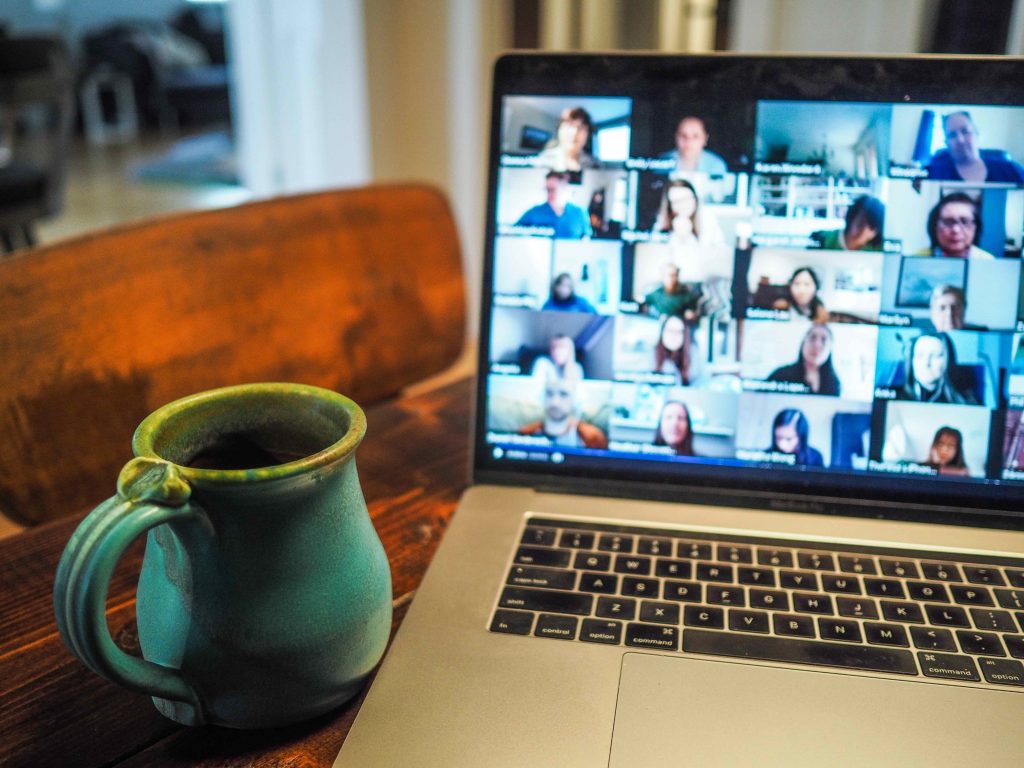Seven things we’ve learned about research on Zoom

Back in early March we had a huge stack of qualitative research tasks ahead of us. Planned trips up and down the country to speak with employers for the Flex Appeal project; a series of co-design sessions for a major medical research project; capturing the lived experiences of transport users across the UK.
At that stage if anyone had suggested doing this over Zoom we’d probably have laughed (politely) and listed off a thousand reasons why that would never work. How could we possibly build rapport over a screen? How would we handle dominant characters? How could we read people’s faces? Nope. Nunca. Never.
Don’t knock it ‘til you’ve tried it
Like all businesses, we’ve had to adapt in the face of crisis, and we’re not ashamed to admit that we’ve surprised ourselves (really surprised ourselves) with the results.
Here are seven things we’ve learnt while doing virtual research:
What’s great about it
- It’s still 100% possible to build rapport through a screen. For me, the most surprising of all. Building good rapport is critical, particularly for repeat co-design sessions, so it was definitely the aspect we had most concerns about. But a little extra time at the beginning of the session (or even a whole session) to really listen to people and getting to know their personalities before diving into the discussion topic goes a long way.
- Zoom is a leveller. Often, we facilitators use a lot of energy managing the dynamics between dominant and quiet characters. Whilst this doesn’t entirely go away on Zoom, in our experience more introverted people have seemed much more at ease in the comfort of their own homes, and therefore willing to contribute to the discussion.
- It’s actually easier to pay attention to who’s talking, making it easier to call on people who’ve been quieter. Your eyes aren’t having to dart around a room at the speed of knots, they’re just looking in one direction. The same goes for picking up body language. However, if you do miss a telling eye roll, or an eyebrow raise during the session, you can look out for them during a replay (just don’t forget to press record).
Things to bear in mind
- Check that home is a safe place to discuss all topics. Talking about something awkward or taboo? Before recruiting make sure all participants are comfortable/ able to discuss such topics surrounded by their family/partner etc.
- Zoom fatigue is real. The energy expended whilst facilitating via Zoom is the same, if not higher, as running sessions in person. Don’t be fooled into thinking you can pack more groups in simply because you don’t have to allow for travel time. We made that mistake early on and now know to give ourselves time to process and digest.
- Make use of the waiting room facility and bring everyone into the session once you’re ready. Semi stilted zoom chats with half of your group are a quick and easy way to create awkward rapport, or make latecomers feel really left out.
Added bonus…
- Push the boundaries with recruitment. The elimination of travel costs, venue hire or travel for participants has opened up endless possibilities in terms of recruitment. Someone’s location, mobility and availability have become less of a challenge and it’s been much easier to recruit from a wider pool of people across the UK making our research more representative. Plus, this way you can ensure budget is used for what it’s meant for: fair remuneration for participants.
Our overall verdict? I think it’s safe to say that as a company we’d now be asking each other why wouldn’t you do it over zoom?
